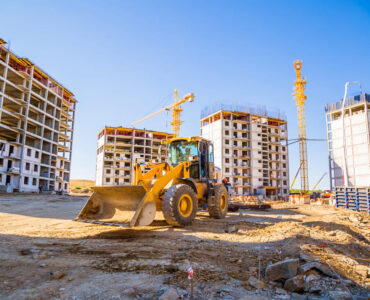The global Industrial Hose Market Size is poised for significant growth, with the market size valued at USD 13.48 billion in 2023 and projected to reach USD 18.96 billion by 2032, reflecting a robust CAGR of 3.9% from 2024 to 2032. This growth trajectory underscores the increasing demand for industrial hoses across various sectors, driven by industrialization, infrastructure development, and advancements in manufacturing technologies. This article delves into the key benefits, industry developments, driving factors, COVID-19 impact, restraining factors, market segmentation, and trends shaping the industrial hose market.
Key Benefits of Industrial Hoses
- Versatility and Durability: Industrial hoses are designed to handle a wide range of fluids, gases, and materials, including chemicals, oil, water, and abrasive substances. Their durability ensures long-term performance under extreme conditions, reducing the need for frequent replacements.
- Safety and Efficiency: High-quality industrial hoses improve safety by minimizing the risk of leaks and spills, which can be hazardous to workers and the environment. Their efficient design also enhances operational efficiency, reducing downtime and maintenance costs.
- Customization: Industrial hoses can be customized to meet specific requirements, such as temperature, pressure, and chemical resistance. This flexibility ensures that hoses can be tailored to fit the unique needs of different industries and applications.
Key Industry Developments
- Technological Advancements: Innovations in hose materials and manufacturing techniques, such as the use of high-performance polymers and reinforced fabrics, are enhancing the durability and flexibility of industrial hoses. Smart hose technologies, equipped with sensors for monitoring and diagnostics, are also gaining traction.
- Expansion of Applications: Industrial hoses are increasingly being used in new applications, including in the renewable energy sector and advanced manufacturing processes. This diversification is opening up new opportunities for market growth.
- Sustainability Initiatives: There is a growing focus on developing environmentally friendly hoses made from recyclable or biodegradable materials. This shift aligns with the broader trend toward sustainability in industrial operations.
Driving Factors
- Industrialization and Infrastructure Development: Rapid industrialization and ongoing infrastructure projects, particularly in emerging economies, are driving the demand for industrial hoses. The need for efficient fluid and material handling systems in construction, mining, and manufacturing sectors is a key growth driver.
- Technological Advancements: Continuous improvements in hose design and materials are making industrial hoses more reliable and versatile. Innovations such as high-pressure and temperature-resistant hoses are expanding their applications.
- Growth in End-User Industries: The growth of key end-user industries, including automotive, aerospace, food and beverage, and pharmaceuticals, is contributing to the increased demand for industrial hoses. These industries require specialized hoses to meet stringent regulatory and performance standards.
Impact of COVID-19
The COVID-19 pandemic had a mixed impact on the industrial hose market. On one hand, the pandemic disrupted supply chains and caused delays in production and distribution. On the other hand, the increased focus on healthcare and hygiene led to higher demand for industrial hoses in medical and pharmaceutical applications. The market is gradually recovering as industries adapt to new operational realities and demand for industrial hoses rebounds.
Restraining Factors
- Raw Material Prices: Fluctuations in the prices of raw materials, such as rubber and synthetic polymers, can impact the cost of manufacturing industrial hoses. These price variations can affect the overall profitability of hose manufacturers.
- Regulatory Challenges: Stringent regulations and standards related to material safety and environmental impact can pose challenges for manufacturers. Compliance with these regulations requires continuous investment in research and development.
- Competition from Alternative Solutions: The availability of alternative fluid and material handling solutions, such as piping systems and conveyor belts, can limit the market growth for industrial hoses.
Market Segmentation
- By Product Type:
- Rubber Hoses
- PVC Hoses
- Metal Hoses
- Composite Hoses
- Others
- By Application:
- Chemical Transfer
- Oil & Gas
- Water & Wastewater Management
- Food & Beverage
- Pharmaceuticals
- Automotive
- Construction
- Others
- By End-User Industry:
- Manufacturing
- Construction
- Mining
- Agriculture
- Automotive
- Aerospace
- Food & Beverage
- Healthcare
- By Region:
- North America
- Europe
- Asia-Pacific
- Latin America
- Middle East & Africa
Market Outlook
The industrial hose market is expected to witness steady growth over the forecast period, driven by increased industrial activities and the expansion of end-user industries. The Asia-Pacific region is anticipated to lead the market due to rapid industrialization and infrastructure development in countries like China and India. North America and Europe are also expected to see significant growth, supported by advancements in technology and the presence of established industrial sectors.
Trends
- Smart Hoses: The integration of smart technologies, such as sensors and IoT connectivity, is becoming a significant trend. These smart hoses provide real-time data on performance and conditions, enhancing monitoring and maintenance capabilities.
- Sustainable Materials: The development of eco-friendly hoses made from sustainable materials is gaining popularity. This trend aligns with the global shift towards reducing environmental impact and enhancing sustainability.
- Customization and Flexibility: Increasing demand for customized hoses tailored to specific applications and operating conditions is driving innovation in the market.
Regional Analysis/Insights
- North America: The region remains a key market for industrial hoses, driven by the presence of major manufacturing and automotive industries. Technological advancements and a focus on sustainability are also contributing to market growth.
- Europe: Europe’s industrial hose market is characterized by a strong focus on regulatory compliance and innovation. The automotive and aerospace sectors are significant contributors to market demand.
- Asia-Pacific: This region is expected to witness the highest growth rate due to rapid industrialization, urbanization, and infrastructure development. The increasing investment in manufacturing and construction sectors is fueling demand for industrial hoses.
- Latin America and Middle East & Africa: These regions are experiencing gradual growth, supported by infrastructure projects and industrial expansion. However, market growth may be moderated by economic and political challenges.
Top Impacting Factors
- Industrial Growth: Expansion in industrial activities and infrastructure projects directly influences the demand for industrial hoses.
- Technological Innovations: Advances in hose materials and smart technologies are enhancing product performance and creating new market opportunities.
- Regulatory Standards: Compliance with safety and environmental regulations affects product development and market dynamics.
Target Audience
The target audience for industrial hoses includes manufacturers, construction companies, mining firms, automotive and aerospace industries, food and beverage processors, and healthcare providers. Additionally, suppliers, distributors, and service providers in the industrial hose sector are key stakeholders.
Major Key Players
- Kurt Manufacturing
- Piranha Hose Products, Inc.
- NORRES Schlauchtechnik GmbH
- Colex International Ltd.
- Kuriyama Holdings Corporation
- ALMAPlast S.r.l.
- Griflex Limited
- REHAU Industries SE & Co. KG
- Danfoss A/S, RR Italia SPA.
- Alfaflex NV
Opportunities
- Emerging Markets: Expanding industrial activities in emerging markets present growth opportunities for industrial hose manufacturers.
- Technological Advancements: Innovations in materials and smart technologies offer potential for product differentiation and new market applications.
- Sustainability Trends: The development of eco-friendly hoses aligns with global sustainability trends, creating opportunities for market expansion.
Challenges
- Raw Material Costs: Volatility in raw material prices can impact manufacturing costs and profitability.
- Regulatory Compliance: Navigating complex regulatory requirements poses challenges for manufacturers, especially in global markets.
- Competition: Intense competition from established players and alternative solutions can impact market share and pricing strategies.
Scope
The scope of the industrial hose market includes the design, manufacturing, and distribution of hoses used across various industries for fluid and material transfer. The market encompasses a wide range of product types and applications, driven by technological advancements and evolving industry needs.




